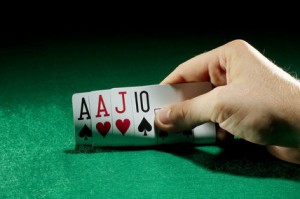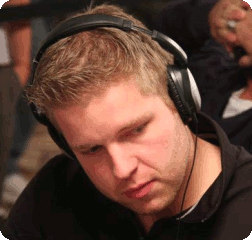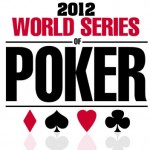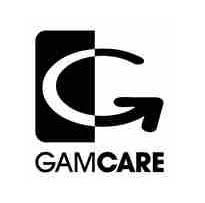Born in Wolverhampton, England in 1957, Marty Wilson rose to fame as a professional poker player, continuing as a personality of the sport long after his playing career slowed down. Known by fans and poker insiders as ‘Mad’ Marty, Wilson is credited with over $450,000 in live earnings but was best known for his enigmatic personality as a raconteur and, above all else, an entertainer. His commentary and reporting skills touched the lives of many poker aficionados, with his love of the game and Las Vegas relayed through his storytelling.
On July 26, the legendary British player passed away following a hard-fought six-month battle with pancreatic cancer. Many took to social media with tributes, including long-time friend and fellow former poker star Padraig Parkinson and Eddie Hearn, whom Wilson had worked with for Matchroom:
Sad,sad https://t.co/5OeftLLn4n lost one of its greatest characters ‘Mad’ Marty Wilson last nite.The lovely Katherine was at his https://t.co/hLGUT5sLsL say he was one of a kind is a huge understatement .I miss him already @Mike_partypoker @ScurrilousMay @LittleDog78 @tom_waters
— Padraig Parkinson (@padraigpoker) July 27, 2019
Rest in peace ‘Mad’ Marty Wilson. Responsible for a lot of our success in poker. Funny, loyal, crazy he would always light up the room with his stories and energy. Thoughts with Katherine and the family x
— Eddie Hearn (@EddieHearn) July 27, 2019
The origins of ‘Mad’ Marty Wilson
Marty Wilson became known around the poker and sporting world as a great character, kind person, and world-class storyteller. He’d recount his many tales in poker to anyone and everyone, becoming better known as an entertainer. While many of these stories were relayed by those who heard them as being crazy or mad, Wilson’s nickname originates long before he started recounting tales.
Born in Wolverhampton, Wilson was a big Wanderers fan but, through the 1960s and 1970s, English football hooliganism was at its height. A young Marty Wilson found himself on the run from fans of his team’s bitter rivals, West Bromwich Albion. To escape his pursuers, he jumped into the polar bear pit at Dudley Zoo, found his way out and into the llama exhibit, and then off into the night, as reported by the Telegraph. Labeled ‘Mad’ Marty in the local press following his escape, Wilson took on the nickname and was known as ‘Mad’ Marty through his career.
Marty Wilson transcending poker
In 1985, Marty Wilson visited the World Series of Poker in Las Vegas, falling in love with the game and Sin City. Honing his skills, he went on to star on the television series Late Night Poker. Wilson never won the televised tournament but was a mainstay on the roster due to being a fan-favorite.
Along with Late Night Poker, Wilson took part in many major poker tournaments around the world. In 1998, the Midlands man brought in $171,000 by winning the Carnival of Poker Tournament and in 2001, he sealed a £7,500 first-place split of the £300 Pot-Limit Hold’em tournament in Glasgow, Scotland. At the peak of his play, Wilson achieved an all-time money list best rank of 487th, still standing at 260th in the all-time money list for his country, England.
Wilson played numerous tournaments, earning at least $450,000 in live winnings, played online poker, became a consultant for Matchroom Sports, and taught many celebrities how to play the game. Under ‘Mad’ Marty’s tutelage was Hollywood superstar Tom Cruise, actor Michael Greco, professional snooker player Matthew Stevens, the greatest darts player of all time, Phil ‘The Power’ Taylor, and presenter Helen Chamberlain, who placed second in the 2005 Poker Millions tournament following Wilson’s teachings.
A masterful storyteller and a tremendous personality in the sport of poker: ‘Mad’ Marty Wilson will be remembered as a great of British sport.

 There’s no doubt poker boom was fuelled by the simplicity and exciting nature of No Limit Holdem (NLHE). It contained exactly what people look for in a card game: one that can be picked up in just a few minutes but can take an eternity to master the subtleties of. Why it took so long is a bit of a mystery. Slower, more math oriented games like Stud ruled for many years in the US, while 5 Card Draw was king in Europe until online poker made Holdem the game of choice. Even in those early days of online poker it was the limit tables that saw most of the traffic.
There’s no doubt poker boom was fuelled by the simplicity and exciting nature of No Limit Holdem (NLHE). It contained exactly what people look for in a card game: one that can be picked up in just a few minutes but can take an eternity to master the subtleties of. Why it took so long is a bit of a mystery. Slower, more math oriented games like Stud ruled for many years in the US, while 5 Card Draw was king in Europe until online poker made Holdem the game of choice. Even in those early days of online poker it was the limit tables that saw most of the traffic. It’s pretty clear that Omaha has become
It’s pretty clear that Omaha has become  If
If  Fans of four-card poker will have plenty to get excited as the Summer, and the
Fans of four-card poker will have plenty to get excited as the Summer, and the 


